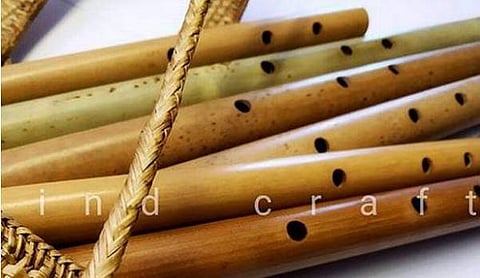
- News
- Campus
- Exam
- Podcast
- Web Stories
- Do You Know
- Path Finders - UG Programs
- Videos
- Élitscape

At the break of dawn, farmers who belonged to the Maurya Empire used to wake up and make their way through fog-covered fields to play music to their crops. The song was believed to help paddy saplings, steeped in water, grow faster. They pressed the tongali, a flute fashioned out of bamboo, close to their nose and allowed music to envelop the farm. Centuries later, the instrument has made its way back to the country, thanks to a bamboo artisan named Rajiv VK and Edgar Balansi Banasan, a musician from the Philippines whose family migrated from what used to be the Kalinga region in India where the the tradition was born.
“This is a hidden part of our history that we didn’t know about,” says Rajiv, “They were a time with a highly developed society. In those days, the flute was used in agriculture and for other cultural activities. It’s amazing how much they knew about music so many years ago.” Rajiv discovered the nose flute in 2019, during an event called Bamboo Music held at the National Institute of Design in Bengaluru. Banasan was one of the participants and Rajiv was his master craft assistant.
He explains, “The two of us worked together on this. He was one of the last Kalingas to have migrated to the Philippines, he had already introduced it to the people there. And through this, we were also able to rediscover and merge certain parts of our history and culture.” This is not Rajiv’s first experiment with bamboo, in fact, he has dedicated his work to finding useful everyday solutions through the material. Over the past several years, he has made flower vases, mobile holders, amplifiers and even cloth hangers out of the material. He swears that it is the only answer in a world that continues to rush after plastic products. Unlike most materials, it is a part of the craftsman’s philosophy which is centred around sustainability.
“Susanth Satyendran, a Principal Designer from NID, is my guru,” he says, “Around 18 years ago, he saw my work with bamboo and took notice. Since then, I have been learning more about the technicality of bamboo. Outside the limitations of bamboo as simply a material, this allows you to see all the possibilities that it holds. It has certainly helped me identify it and develop my ideas.”
Having grown up on the banks of the Periyar in Idukki, he reveals that his affinity to bamboo and the craft around it. After securing a Diploma in Telecommunication in 2000, he has been working towards spreading information about bamboo as a sustainable alternative. Last year, he was a keynote speaker at the International Bamboo Meet which had more than 16 nations attending. He is also a jury member of the International Bamboo and Rattan Organisation thanks to his relentless work towards representing bamboo in the international level.
